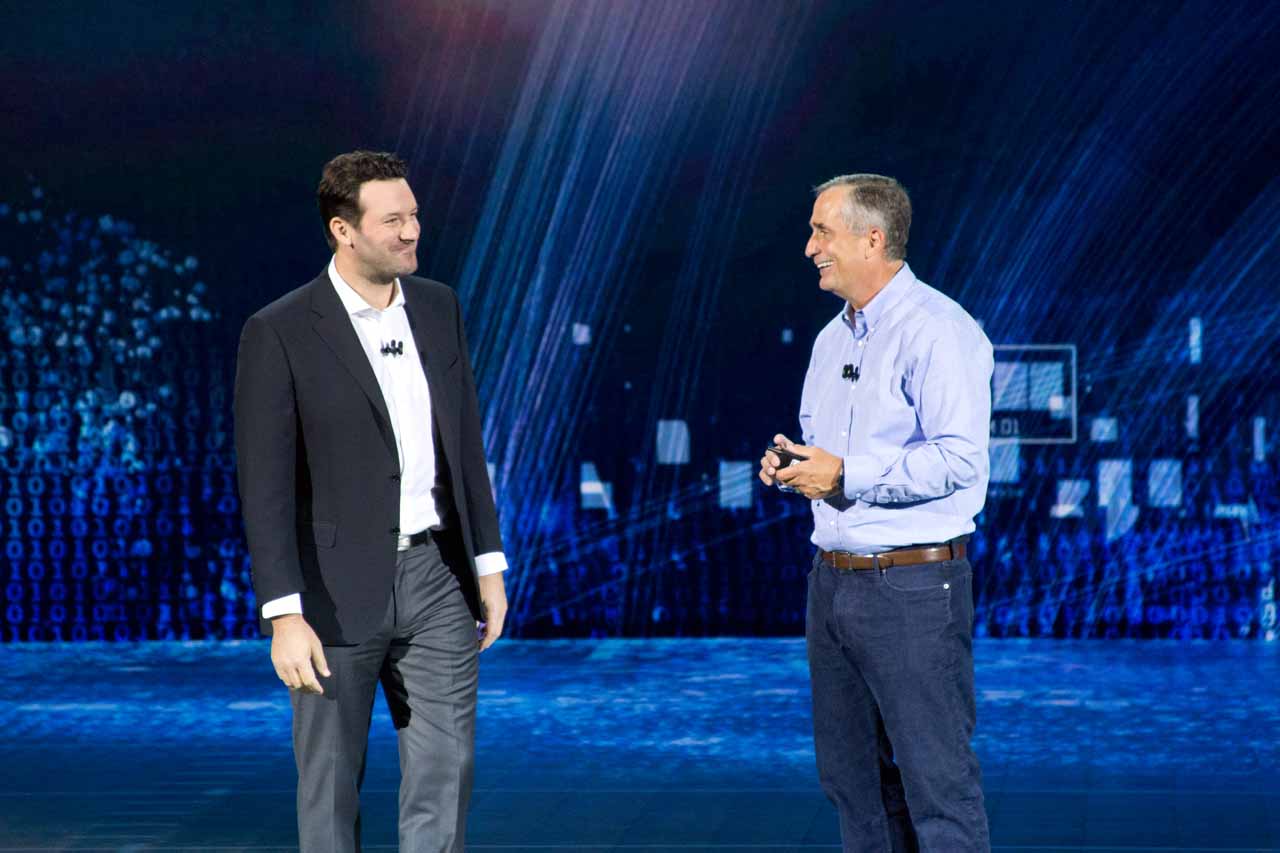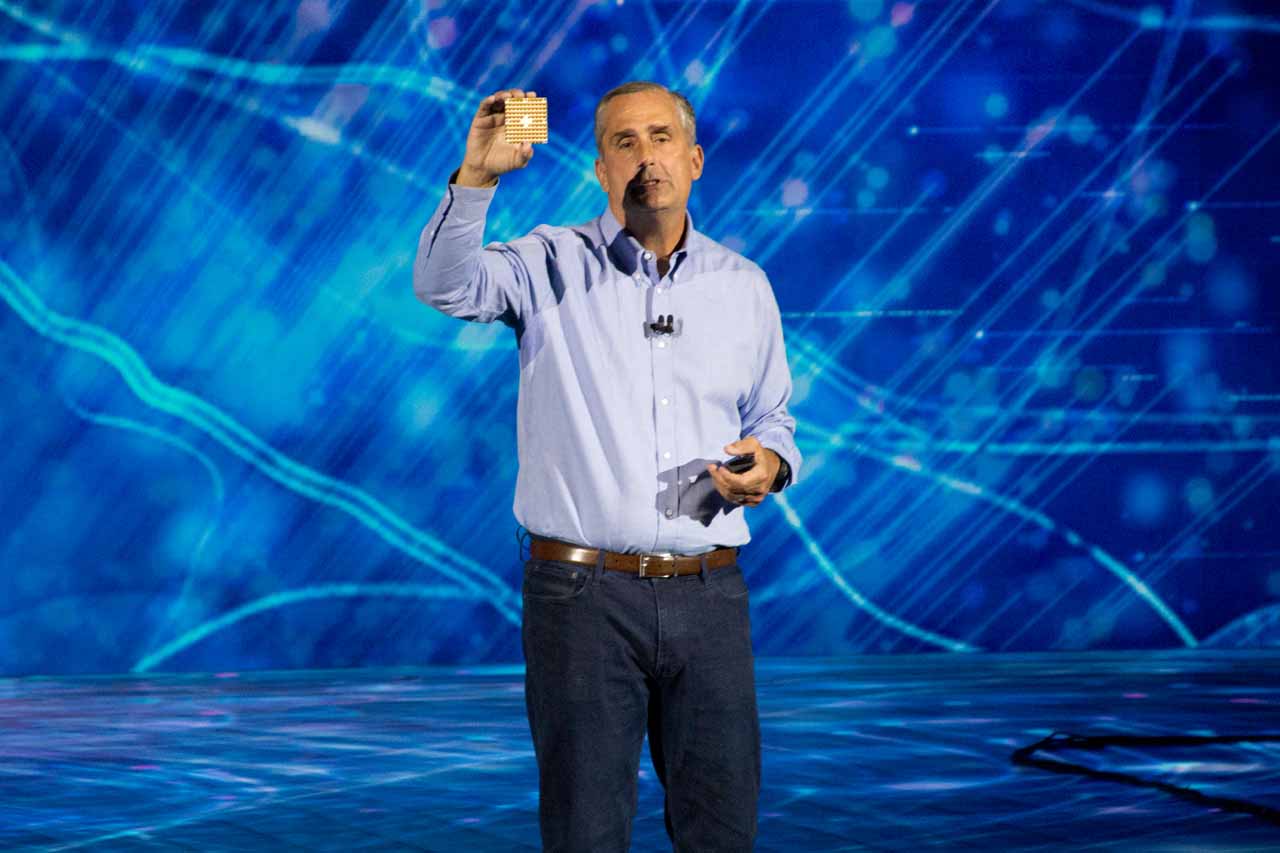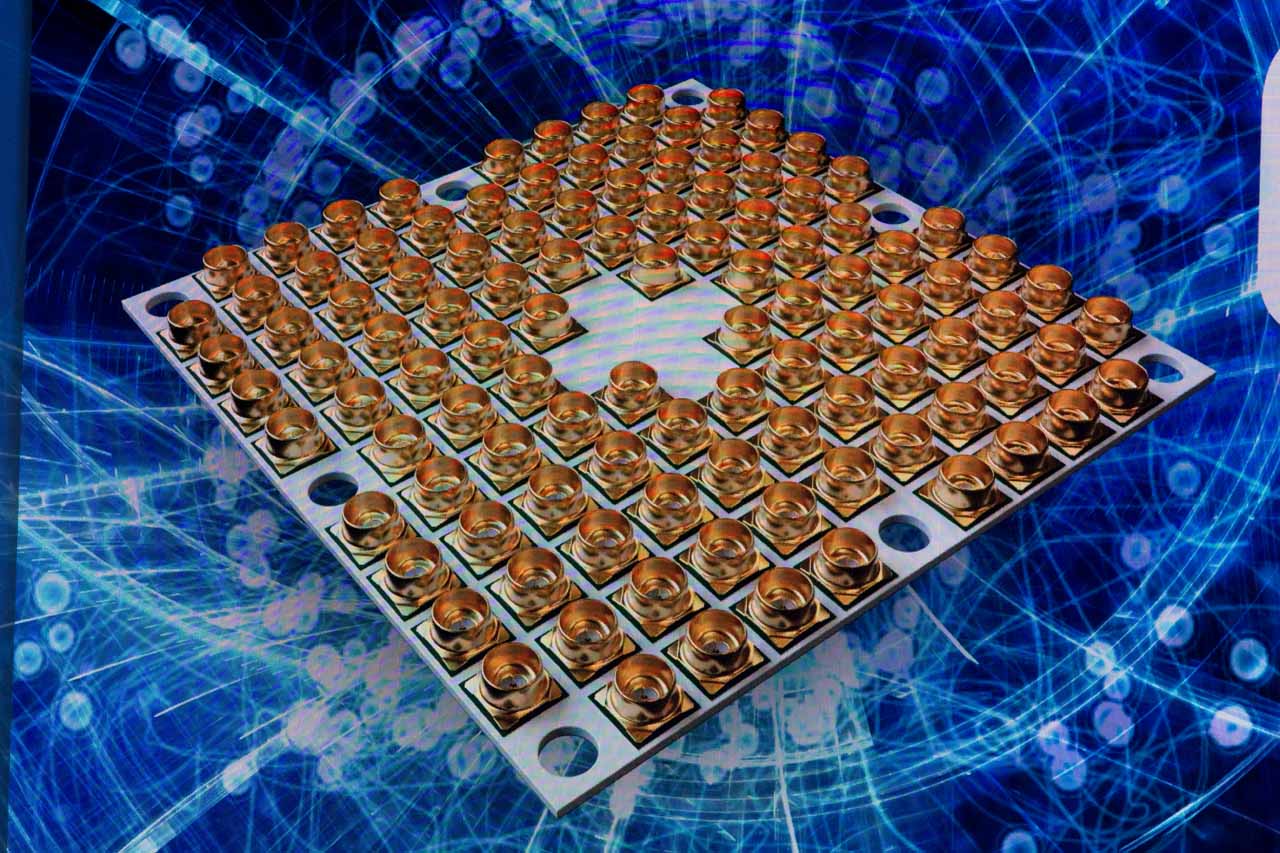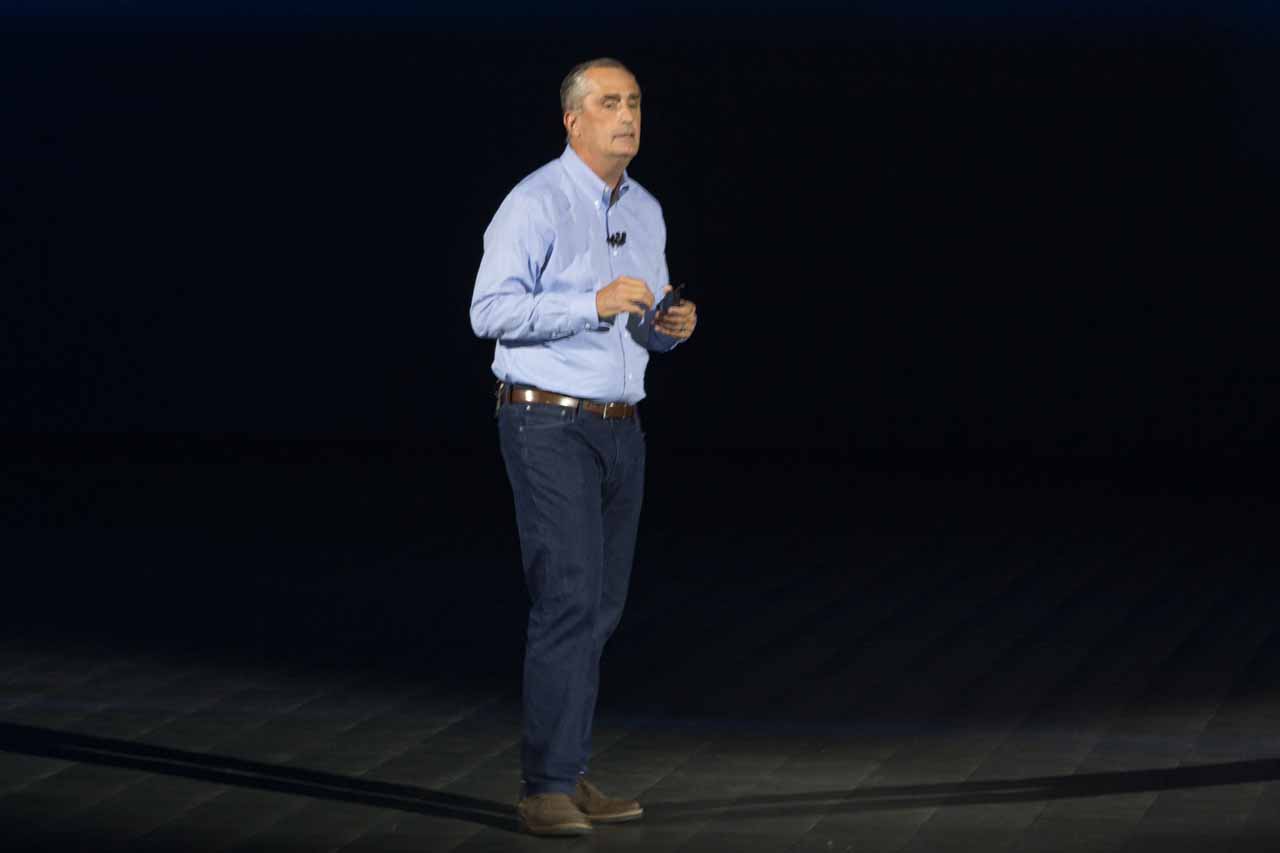Intel CEO Brian Krzanich Delivers CES Keynote; No 10nm Update
Update, 1/9/18: Intel announced at an early morning event the next day that it had shipped 10nm Cannon Lake processors last year.
LAS VEGAS, NV -- Intel's CEO Brian Krzanich took the stage to deliver the opening CES 2018 keynote during a remarkably challenging time for not only his company, but also himself. Intel has been woefully late delivering its 10nm process technology, which the company failed to deliver last year, again.
We'll cover that shortly. First, this: News haphazardly broke last week that all Intel CPUs could suffer up to a 30% performance loss due to an internal bug in Intel's processors. Soon after, the real story came out: The newly discovered Meltdown and Spectre exploits aren't exclusive to Intel; they also affect chips from other companies. Some companies aren't as vulnerable, such as AMD, but a range of Intel's competitors, such as ARM and Nvidia, share comparable vulnerabilities.
The new exploits aren't as bad as the regurgitating press reported at first, and newer desktop PCs are largely safe from performance hits after the first patch. However, the vulnerabilities could cause serious challenges in the data center until they are fully mitigated. That could expose Intel to billions in lawsuits.
News also emerged that Krzanich sold $39 million of his own Intel stock, leaving him with the Intel-mandated minimum of 250,000 stocks before the company notified the public or the industry of the vulnerabilities. As reported by Bloomberg, that could expose Krzanich to an SEC investigation for insider trading. In fact, just hours before his keynote, Block & Leviton LLP, announced it is investigating Krzanich for securities fraud.
A final piece of news broke as the auditorium filled around us: The Oregonian reported that it had obtained a Krzanich memo that outlines the formation of a new Intel group called Product Assurance and Security. Krzanich is outfitting the group with top guns from the company's management roster, such as Leslie Culberson, the general manager for systems manufacturing; Josh Walden, head of Intel's technology group; and Steve Smith, the Vice President and General Manager of its data center engineering group. This new group will tackle the current exploits, likely streamlining patches and collaborating with application developers, and perhaps working on avoiding future problems.
Intel As An Entertainment Company
Forming a new security group is the kind of aggressive action that Intel's customers, and the industry, needs to see. We fully expected Krzanich to grab the bull by the horns in his keynote, and he did. Krzanich somberly addressed the Meltdown and Spectre exploits just moments into his presentation. He thanked the industry for coming together to address the issues, which is a carefully crafted statement to remind us that Intel isn't the only company impacted, but he didn't announce the new security group. Instead, Krzanich repeated many of the same things that we've covered over the last week.
Get Tom's Hardware's best news and in-depth reviews, straight to your inbox.
Intel has worked with partners to deploy patches for 90% of processors sold within the last five years, and the company fully expects to protect the remaining 10% within the next week. We still don't know when older chips will receive a patch, though.
After reminding us that the exploits have varying levels of impacts, and that desktop PCs are largely safe, Krzanich embarked on one of the most impressive whirlwinds of visually stunning demonstrations we've ever seen at a keynote. The demonstrations lasted seemingly forever, as Krzanich trotted out several new Intel products and partnerships that revolved around the incoming flood of data, and of course, Intel's ability to handle and analyze it.
The company treated us to demos of immersive VR experiences, such as Intel's True VR, and new 3D volumetric video recordings that use "voxels," which are pixels rendered in a 3D space. The company announced it would broadcast 30 events live from the Winter Olympics in Pyongchang to worldwide viewers in VR. The company even brought out a fully autonomous two-seater helicopter. It flew on stage, albeit behind a protective glass barrier, and the company showed a video of Krzanich riding in the helicopter in a warehouse.


Krzanich also demoed video technology that powers 3D football replays. They even brought out ex-Dallas Cowboys quarterback Tony Romo to call the play-by-play of the Kansas City Chiefs scoring a touchdown against the Los Angeles Chargers. Another demo showed a VR experience that allows you to watch a football game from any point on the field, all while viewing your fantasy league stats in real time.
Intel is also building its new Intel Studios to record volumetric video. The company demoed the new recording technique and brought out Jim Gianopulos, CEO of Paramount Pictures to discuss the collaboration between the two companies with the new technology. Intel also treated us to the latest in Movidius technology, as several musicians used its camera sensing technology and AI capabilities to play invisible instruments. They even trained two AI band members to play along, all in real-time.


With such a heavy focus on entertainment technology, one wondered when the company would talk about new core products. Krzanich almost obliged as he spoke about several of the company's products that are in development. First, he showed a 49-qubit processor, a step up from the 17-quibit model that the company announced earlier this year, describing the chips as "a step towards quantum supremacy." This type of chip is likely several years, and product generations, away from high volume manufacturing.
Krzanich also brought out Loihi, an already-announced developmental chip that is years from high volume manufacturing. This neuromorphic chip simulates the brain in silicon, such as synapses and neurons. That grants it unique learning capabilities. Intel said the chip has already begun to identify objects after just a few weeks in the lab.
Krzanich finally got around to mentioning a retail processor. He covered the Atom processors when Mobileye brought out the first car of its already-announced 100-car fleet of autonomous vehicles. Atom processors are certainly not exciting from a raw performance perspective, but they do offer a surprisingly efficient platform for autonomous vehicles.
Mobileye announced that Krzanich would use the vehicle as his own; he'll actually ride it to and from work for a year. He also said some members of the media could ride along.
But Where Is 10nm?
That was the last of the processor talk from the chip giant. Intel originally promised that it would deliver the 10nm process back in 2016. After several delays, the company promised that it would deliver 10nm processors to market in 2017. Krzanich did not mention the 10nm process tonight at all, and we know the products aren't at retail. Therefore, Intel apparently didn't make that target yet again.
This may seem a minor matter, but Intel has sold processors based on the underlying Skylake microarchitecture since 2015, and it's been woefully mired in the 14nm process since 2014. That means Intel is on the fourth iteration of the same process. That doesn't bode well for a company that regularly claims its process node technology is three years ahead of its competitors.
In the meantime, custom foundries like TSMC and GlobalFoundries are gaining ground. AMD is already using GloFo's 12nm process in coming products and will move to 7nm in 2019. Many analysts feel that there is a surprising parity between Intel's 10nm and GloFo's 7nm, so we could see AMD finally on an even footing with Intel.
However, the problem with the late 10nm process and stagnant microarchitecture development are even larger than they appear on the surface. Krzanich's keynote was a sure sign that the company is succeeding in its goal to diversify its product lines into AI, the data center, autonomous driving, 5G, FPGAs, and IoT, among others.
Unfortunately, Intel's process technologies touch every segment of all that tech, as well as the chips that power them. 10nm's unexplained absence could hamper Intel's competitiveness in nearly all of those segments.
A late 10nm process, expensive Meltdown and Spectre vulnerabilities, potential lawsuits, and a possible SEC investigation of the CEO all loom large for Intel.
Krzanich treated us to one last demo that included 100 of the company's new Shooting Star Mini drones flying in formation to a popular pop song as they changed colors. The dazzling display was impressive, and Krzanich claimed it set the world record for the most drones flown simultaneously indoors without GPS. After the song ended, the drones whirred quietly in the air above us as Krzanich raised his arms and then lowered them. At his gesture, all 100 drones floated down to the stage and landed in unison. It was an impressive move to end the keynote, but in many respects, the real show is just beginning.

Paul Alcorn is the Editor-in-Chief for Tom's Hardware US. He also writes news and reviews on CPUs, storage, and enterprise hardware.
-
raycrayz Good article.Reply
These signs taken together really look like Intel is loosing it's core market to AMD.
All of their CPU's for the next (2 years ?) will have the meltdown bug. They thought they're architecture was perfect but we just discovered it's flawed.
And the CEO bailed on his company, and isn't even addressing the underlining architectural issues that all of their CPU's face, which is the bread and butter for Intel.
1) Intel is behind in security. a software patch can always be exploited or reversed. Hardware fixes are much more secure. Therefore AMD is much more secure.
2) Intel is behind in architecture.. they have to patch. They were already slower than AMD in some computing segments, and only retained their lead in gaming. Those other segments just saw a 5-30% (some cases up to 50%) performance retardation due to the patch.
3) Intel needs to update their microarchitecture.. which will be impressive when they do it.. but it'll take a few years. Until then they're selling junk.
4) Thanks to the patch Intel is now behind in the current 14+++ nm speed race versus AMD.. and their falling behind further and further. AMD is moving to 12nm, and then to 7nm (thanks to IBM), while Intel's engineers leaks are suggesting that the 10nm fabrication is going to slower than Intel's current 14+++ and will may not even be available by Christmas 2018.
A year ago, when AMD announced Zen, never would I ever have thought that Intel was in jeopardy of loosing their core business to AMD... yet I can't for the life of me find a single good reason for anyone to buy Intel. That 10% lead in IPC for games is about to vanish.
And Intel keeps lying outright, stretching the truth, deflecting. They're acting like a company in trouble. -
artk2219 Reply20575945 said:Good article.
These signs taken together really look like Intel is loosing it's core market to AMD.
All of their CPU's for the next (2 years ?) will have the meltdown bug. They thought they're architecture was perfect but we just discovered it's flawed.
And the CEO bailed on his company, and isn't even addressing the underlining architectural issues that all of their CPU's face, which is the bread and butter for Intel.
1) Intel is behind in security. a software patch can always be exploited or reversed. Hardware fixes are much more secure. Therefore AMD is much more secure.
2) Intel is behind in architecture.. they have to patch. They were already slower than AMD in some computing segments, and only retained their lead in gaming. Those other segments just saw a 5-30% (some cases up to 50%) performance retardation due to the patch.
3) Intel needs to update their microarchitecture.. which will be impressive when they do it.. but it'll take a few years. Until then they're selling junk.
4) Thanks to the patch Intel is now behind in the current 14+++ nm speed race versus AMD.. and their falling behind further and further. AMD is moving to 12nm, and then to 7nm (thanks to IBM), while Intel's engineers leaks are suggesting that the 10nm fabrication is going to slower than Intel's current 14+++ and will may not even be available by Christmas 2018.
A year ago, when AMD announced Zen, never would I ever have thought that Intel was in jeopardy of loosing their core business to AMD... yet I can't for the life of me find a single good reason for anyone to buy Intel. That 10% lead in IPC for games is about to vanish.
And Intel keeps lying outright, stretching the truth, deflecting. They're acting like a company in trouble.
The sad part is that it really doesn't even matter, even if they're in the same position that they were in when AMD had the Athlon 64, they still won't be hurt in the way they need to be to really change. They'll still lie, cheat, and bribe their way to maintaining their dominance, and there will still be people that only buy Intel because they don't know any better, dont care to know any better, or they got paid to. -
t8z5h3 i think my fix would be to:Reply
next week kill the processor section of intel sell it all.
move all funding into a all out push for AI jest completely take over that market and also go dark to the public, no interviews or nothing. -
Giroro So intel's solution to security is to create a group of made of 100% non-technical executive management?Reply
I don't think a group of eight-figure suits, whom all share the job description "maximize profit", will do a particularly good job at identifying and fixing low level flaws with their architecture and/or code.




